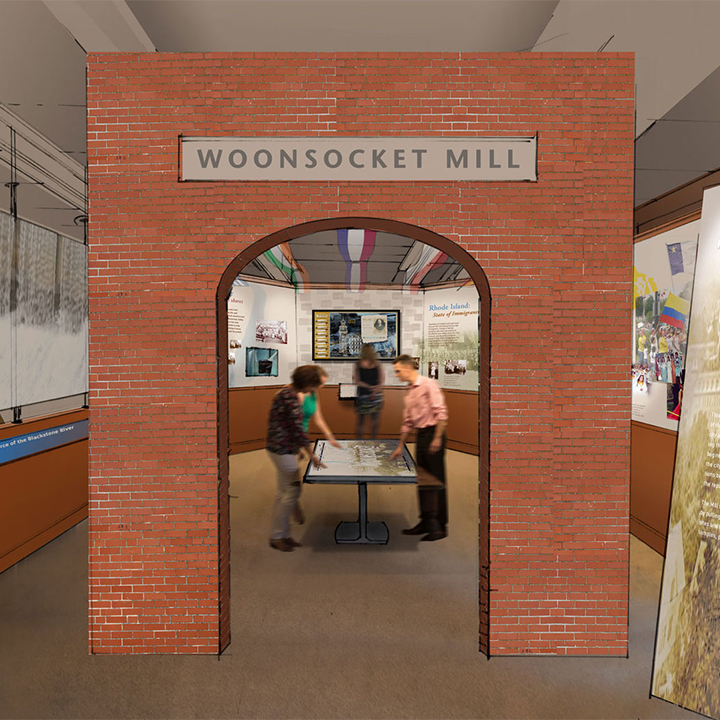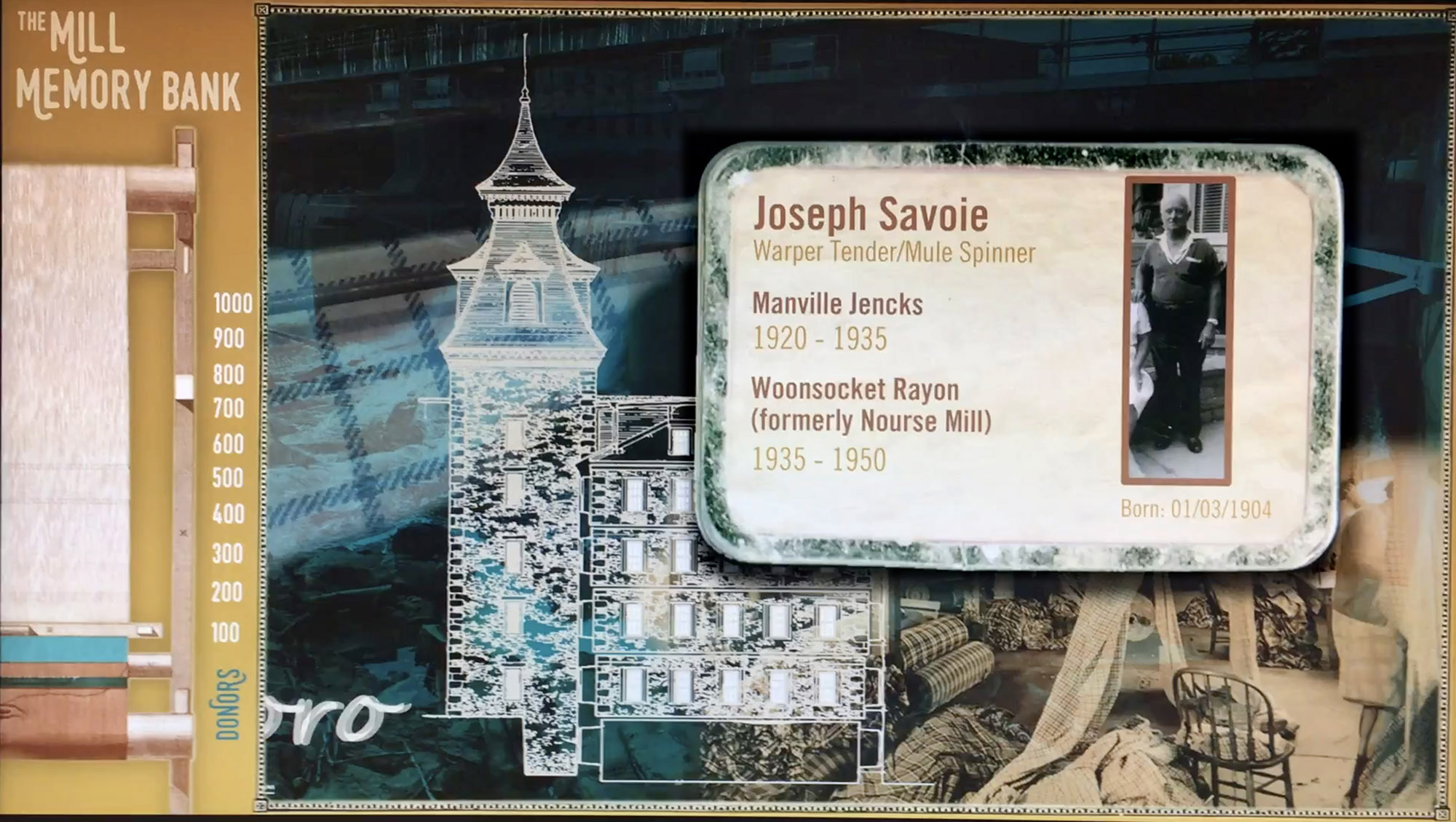Exhibit sketch using the Blackstone River as a metaphor, visitors learn through interactive exhibits about how the mills changed the historical landscape
Anne Conway, the director of the Museum of Work and Culture, is the driving force behind “Woonsocket Works” a new exhibit that will give visitors the opportunity to learn through interactive experiences about the hundreds of mills in the city during the region’s industrial heyday, shaping the city and the lives and culture of its people. During her 20 years with the museum, she has enhanced the original exhibit plan with additions that connect the institution with the community around it.
“The Mill Memory Bank” is an interactive database that tells the stories of the workers from the Blackstone Valley. Continuously updated by Museum staff as individuals make their contributions, either on-line or in person, these records become an important part of the collection. On the large gallery screen a dynamic display of the visitor’s entry will also appear (see above). Read here how families and friends gather to watch as their history becomes a part of the museum. Now we are developing a touch screen interface that will allow users to interact with history on their terms, searching the database and watching interviews with mill workers and owners.
 Ed Malouf of Content Design works with Jill Domenici and Bruce Spero of Trivium Interactive to test user accessibility
Ed Malouf of Content Design works with Jill Domenici and Bruce Spero of Trivium Interactive to test user accessibility
The next phase of “Woonsocket Works” will develop the exhibit space with graphics and a multi-touch table experience bringing the history of this corner of the Blackstone Valley to life with interactive maps and the cultural stories that have shaped the vibrant community of Woonsocket. This variety of experiences will address the needs of all types of museum visitors, including the streaker, the stroller, and the studier. With the completed “Woonsocket Works” gallery there will be exhibits organized to respond to all three.
“We can’t talk about the mills without talking about the workers,” Conway said. “That’s what the Museum of Work and Culture is about. It’s about people.”



